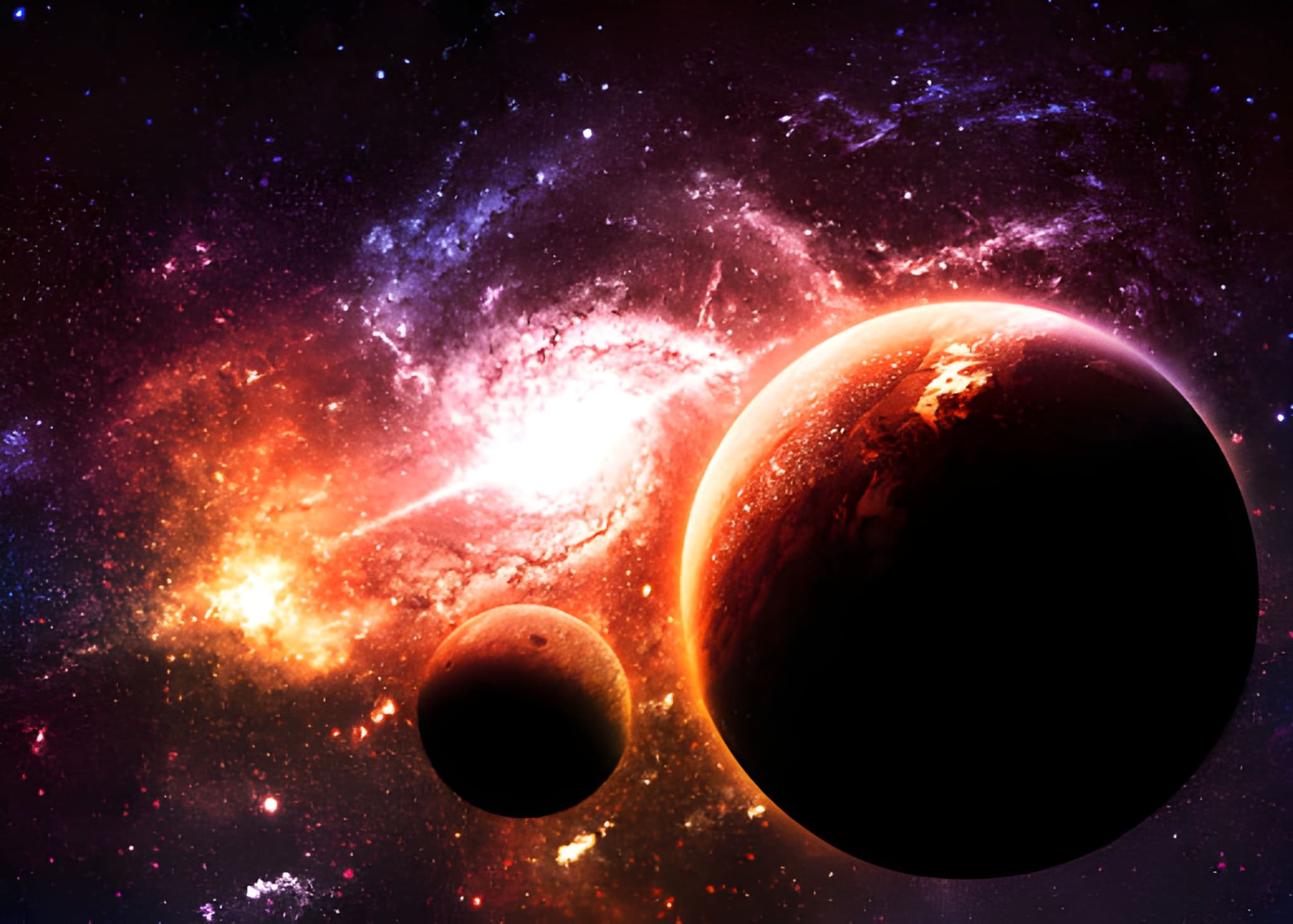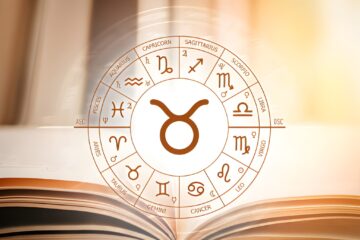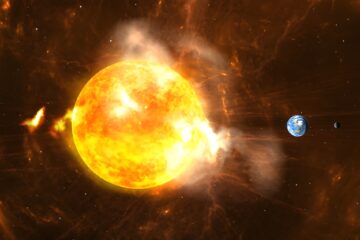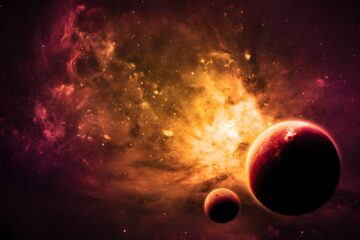In Jyotish (Vedic astrology), once you understand the twelve signs and twelve houses, the next major step is learning the nine planets in Vedic astrology, also called the navagrahas. These nine grahas are the active agents in a birth chart. They shape personality, life events, health, relationships, reputation, and the timing of experiences through dashas and transits.
This guide gives you a clean, practical map of what each of the nine planets in Vedic astrology naturally signifies. It’s not meant to be an encyclopedic list of every possible association. It’s meant to be usable. You can reference it while reading a chart, during Dasha analysis, or when trying to interpret what a transit is waking up in someone’s life.
As you advance, you’ll layer in divisional charts (D9, D10, etc.), nakshatras, upagrahas, yogas, combustion, retrograde nuance, and so on. But this is the core. If you can clearly state “this planet = these things,” you can build accurate interpretations without getting lost in noise.
1) Sun (Surya)
The Sun represents identity, ego, father/father-figures, dignity, vitality, and leadership. In mundane terms it shows authority, government, status, visibility, and one’s desire to stand in their truth. The Sun is royal, focused, self-willed.
- Psychological: Confidence, purpose, pride, self-respect, willpower, integrity.
- Social: Nobility, reputation, authority roles, boss/superior figures.
- Physical/medical: Bones, heart, circulation/arteries, eyesight (especially right eye), bile/heat, stomach (upper digestive fire).
A strong Sun grants presence, clarity of direction, and natural leadership. A weak / afflicted Sun may show ego insecurity, father issues, or health issues tied to vitality or heart.
2) Moon (Chandra)
The Moon governs the mind, emotional state, sensitivity, instinct, memory, comfort, nourishment and our need for safety. It signifies the mother/mother-figures, caretaking, and mass emotion (the “public mood”). The Moon is reflective and fluid.
- Psychological: Mood, emotional regulation, bonding, intuition, imagination.
- Social: Popularity, public reception, travel involving water, hospitality, caregiving roles.
- Physical/medical: Fluids, lymph, breasts, lungs/upper chest, throat, left eye.
The brighter and stronger the Moon, the steadier the emotional field. A stressed Moon can show anxiety, oversensitivity, mood swings, sleep disturbances.
3) Mars (Mangal / Kuja)
Mars is raw energy, drive, action, force, blood heat, confrontation, bravery. It is the warrior among the nine planets in Vedic astrology. Mars rules ambition, athletics, surgery, police/military, sharp tools, accidents, fire, explosions, urgency.
- Psychological: Anger, impulse, initiative, competitiveness, survival instinct.
- Social: Conflict, assertion, dominance, crisis response, military/protective roles.
- Physical/medical: Muscles, bone marrow, nose/sinuses, male reproductive organs, bleeding/injury.
Mars is also the natural significator of younger siblings (particularly brothers) and physical courage. Controlled Mars = power. Uncontrolled Mars = damage.
4) Jupiter (Guru / Brihaspati)
Jupiter is wisdom, expansion, grace, faith, ethics, children, blessings, teachers, higher learning, law, philosophy, prosperity. Jupiter is the “guru” of the nine planets in Vedic astrology.
- Psychological: Hope, optimism, morality, sense of meaning.
- Social: Teaching, counsel, guidance, protection, luck, reputation for goodness.
- Physical/medical: Liver, hips, certain glands/endocrine functions, ears.
A strong Jupiter uplifts the chart: wealth, ethics, benevolence, respected knowledge. A weak Jupiter can mean confusion in belief systems, poor judgment, or moral compromise.
5) Mercury (Budha)
Mercury rules thought, speech, logic, trade, language, data, technology, messaging, and adaptability. It shows how the mind processes reality — not emotionally (Moon), not morally (Jupiter), but analytically.
- Psychological: Curiosity, nervous energy, wit, argument, calculation, memory of facts.
- Social: Commerce, writing, journalism, negotiation, marketing, tutoring.
- Physical/medical: Tongue/speech, hands/arms, skin, intestines, nervous system.
Mercury is youthful and flexible. Strong Mercury = communication power, fast learning. Afflicted Mercury can show anxiety, scattered thinking, manipulation, or nervous system strain.
6) Venus (Shukra)
Venus governs love, aesthetics, beauty, pleasure, intimacy, romance, art, music, luxury, vehicles, jewelry, comforts, refinement, and relationship quality. Venus is also tied to wealth management and material enjoyment.
- Psychological: Desire, attraction, charm, sensuality, taste, grace.
- Social: Marriage/partner (especially for men in many classical readings), fashion, entertainment, diplomacy, pleasure industries.
- Physical/medical: Kidneys, reproductive system (especially female reproductive health), hormones related to attraction/pleasure.
A strong Venus brings magnetism, comfort, sweetness, artistic gift. An afflicted Venus can bring attachment, indulgence, relationship instability, or vanity addiction.
7) Saturn (Shani)
Saturn is structure, karma, limitation, endurance, realism, time, labor, patience, consequence. Saturn in the nine planets in Vedic astrology is the slow teacher: it withholds until you mature.
- Psychological: Responsibility, seriousness, fear, caution, humility, perseverance.
- Social: Duty, service, career grind, long-term construction, systems, regulations, mining, factories, manual/industrial work.
- Physical/medical: Knees, ankles, shins, chronic pain, large intestine, stiffness, degeneration over time.
A strong Saturn gives resilience, discipline, credibility, seniority. A hard Saturn can show depression, isolation, guilt, pressure, fatigue, and experiences of loss or delay. Saturn matures a person by forcing reality.
8) Rahu (North Node)
Rahu is obsession, hunger, foreignness, disruption, shock, chemical/technological influence, sudden rise, scandal, addiction, politics, fame through unconventional means. Rahu is worldly desire in overdrive.
- Psychological: Craving, restlessness, anxiety, boundary-pushing, rule-breaking, fascination with taboo.
- Social: Foreign travel, immigration, media hype, politics, PR machines, fame, social-media magnitude, science/tech/unnatural substances.
- Physical/medical: Strange or hard-to-diagnose conditions, toxicity, compulsions, mental overstimulation. Places like hospitals, prisons, quarantines.
The North Node, Rahu, amplifies what it touches. It can create superstar visibility or total instability. In practice Rahu shows where life feels karmically urgent and “unfinished.”
9) Ketu (South Node)
Ketu is detachment, renunciation, spiritual intelligence, past-life residue, intuition, psychic seeing, sudden endings, and ego cutting. If Rahu is “I want,” Ketu is “I’m done with this.”
- Psychological: Non-attachment, introspection, withdrawal, disinterest in superficial validation.
- Social: Solitude, meditation, secrecy, occult study, mysticism, crisis purification, scandal exposure.
- Physical/medical: Spine, sudden shocks, cutting/severing events, epidemic-like patterns, karmic/ancestral imprints.
Ketu tends to hollow out whatever house it sits in, so you’re forced to look inward instead of chasing external drama. Properly guided, that becomes wisdom. Unguided, that can feel like isolation or confusion.
How to Actually Use the Nine Planets in Vedic Astrology When Reading a Chart
Here’s how to apply this list in real chart work without drowning in theory. This is the part most books skip, but it’s where skill develops.
1. Match Planet → House → Sign
Take each of the nine planets in Vedic astrology and ask:
“What does this planet naturally mean?” +
“What does the house it sits in mean?” +
“What does the sign it sits in add (tone, style, dignity)?”
If those meanings line up, that topic gets LOUD in life — especially in that planet’s Mahadasha or sub-periods. Example: Mars (courage, action) in the 10th house (public work, career) in Capricorn (discipline, authority) almost screams “executive/technical leadership through force and competence.”
2. Repeating Themes = Real Life
When a planet’s natural karakatva matches the house topic, expect that thing to show up clearly in the native’s behavior and timing. Example: The Sun rules father/authority. If the Sun sits in the 9th house (teachers, father, dharma), matters of father/mentor/reputation become central life themes.
3. Use Dashas and Transits for Timing
A placement can sit quietly for years — then explode into relevance in that planet’s Mahadasha, Antardasha, or a major transit. The nine planets in Vedic astrology are not always “on.” They wake up in sequence.
4. Dignity, Aspects, Combustion, Retrograde
Always refine with:
dignity (own sign, exalted, debilitated),
aspects (especially Saturn/Jupiter/Mars),
combustion (too close to Sun),
retrograde behavior,
and divisional charts (D9 for inner strength/marriage, D10 for career, etc).
These factors change tone, delivery style, and how “cleanly” a planet can give results.
5. Don’t Panic-Read Malefics
Saturn, Mars, Rahu, Ketu are not “always bad.” They are simply intense. For some ascendants, Mars or Saturn is actually a functional benefic or even a Yogakaraka. Context matters. You are never allowed to interpret just from keywords without looking at ownership and dignity in the chart.
Important Notes (Deepening Your Interpretation)
When a house (bhava) and a planet both symbolize the same topic, which matters more?
They work together. First read the house itself (condition of the house, its lord, aspects on it). Then read the natural significator (karaka) of that topic. For example, for career you’d read the 10th house, its lord, planets placed there, and also look at the Sun (status), Saturn (work), and D10 (profession chart). If both the bhava and the graha are strong and aligned, that life area is powerful. And, if one is weak, expect struggle or delay even if the other looks good.
If Mercury rules the 2nd and 11th and sits exalted in the 2nd, is that a money yoga?
It’s a strong wealth indicator (Dhana/ Labha connection), yes. But do not declare “guaranteed riches” until you check: dignity of Mercury in navamsa (D9), aspects from malefics/benefics, combustion (too close to Sun), and any severe affliction. You confirm, you don’t assume.
Which shows “who I am” better: Moon sign or Lagna (Ascendant) sign?
Different layers. Lagna shows physical presence, visible style, health pattern, how you meet the world. Moon shows private mind, instinctive emotional response, memory, comfort needs. Read both. The public may describe you more like your Lagna; you’ll experience yourself more like your Moon.
How do retrograde planets behave compared to direct planets?
Retrograde often intensifies or internalizes the planet’s agenda. Saturn retrograde may turn discipline inward (self-critique, restructuring). Mercury retrograde may loop thoughts, replay conversations, or force learning through errors. Jupiter retrograde can make faith more personal, less performative. Retrograde = compressed lesson, not automatic weakness.
If multiple planets hit the Ascendant, who “wins”?
Check degree closeness to the exact Ascendant degree. The tighter the degree, the louder the influence. Also check dignity and functional nature. A debilitated planet exactly on Lagna can shout louder than a strong but distant benefic in the 5th. House strength + orb = weight.
Will strengthening one planet (with a gemstone, etc.) accidentally harm another?
Potentially, yes, if you strengthen a functional malefic or a planet that is in conflict with more benefic placements. You never “just wear a stone because it’s pretty.” You first confirm: Is this planet friendly in this chart? Is it a benefic for this Lagna? Is it already over-dominant? If unsure, use non-gem remedies first (mantra, charity, lifestyle alignment) and get a proper reading before locking yourself into a gemstone.
What if a planet is exalted in D1 but debilitated in Navamsa (D9)?
Then it often starts strong outwardly (D1) but struggles with long-term stability or inner harmony (D9). This can look like “fast start, soft fade,” or “public success, private strain,” especially in marriage or dharma-related issues. Reverse is also true: weak in D1 but strong in D9 can mean slow start, deeper flowering later in life.
How do Rahu and Ketu affect planets they conjoin?
Rahu amplifies and distorts the planet’s worldly expression. Ketu spiritualizes and cuts attachment to that planet’s normal behavior. Rahu-Mercury can create brilliant schemers or tech minds; Ketu-Mercury can create cutting insight, research brilliance, or social withdrawal. You MUST read the dispositor (sign lord) and nakshatra lord to know if that fusion is healthy or toxic.
How close is “conjunct” really?
Same sign = technical conjunction, yes. But practically, under ~12° starts to be meaningful, and under ~8° is usually strong. Two planets in different signs but within about 8° can still “behave conjunct,” but it’s weaker because they answer to different sign lords. Always measure degree distance, not just sign labels.
Should I always use divisional charts like D10 (career), D9 (marriage/inner dharma), etc.?
Yes, once you’re comfortable with the basics. D1 shows the main storyline. D9 refines spiritual/relationship quality and long-term maturity. D10 refines career/professional expression. The nine planets in Vedic astrology will “speak differently” in each divisional chart, and that’s how you get nuance that generic cookbook astrology can’t reach.
Do upagrahas like Gulika / Mandi matter right away?
They matter in advanced work, yes, especially Gulika and Mandi (which many classical astrologers consider), but you don’t need them to start reading charts effectively. First master the nine visible planets in Vedic astrology, house lords, dignity, aspects, yogas, dashas, and transits. Then add upagrahas if you see consistent patterns in your own case studies.
What is karaka bhaava nasha and should I panic about it?
The rule says when the natural significator (karaka) of a house sits in that same house, it can “damage” that house — but this is overused. In real practice it’s subtle and depends on dignity, aspects, and isolation. Example: Sun in the 9th for father/teacher matters, Moon in 4th for mother/home, etc. Don’t apply it mechanically without context.
FAQ
Does Ketu in a trine enhance a raj yoga?
Ketu concentrates and spiritualizes. If Ketu sits in a trine and supports planets that are already forming a raj yoga, it can intensify that yoga — sometimes as sudden rise, sometimes as inner detachment from fame, sometimes both. The flavor depends on dispositor dignity and aspects. In plain English: yes, Ketu can “turn up the voltage,” but it might turn it inward as much as outward.
Which matters more for personality: the nine planets in Vedic astrology or just the Lagna lords?
The Lagna and its lord show “who walks into the room.” But the nine planets in Vedic astrology tell you what that person is carrying: trauma, desire, gifts, duties, karmic knots, grace. You need both. Lagna = face. Planets = story behind the face.
Can one strong planet save a weak chart?
Sometimes. A single overwhelmingly strong planet (for example, an exalted Yogakaraka in a kendra, well-aspected, high shadbala) can act like a pillar that holds the whole life together. But usually results are mixed. Real lives are layered. Astrology is not “good chart / bad chart.” It’s “what works easily vs what will require work.”
When should I start worrying about gems, mantras, remedies, all that?
After you understand the chart. Remedies without diagnosis is panic-shopping. Remedies with correct diagnosis is strategy. The smart move is: read the chart honestly, identify structural strengths/weaknesses, then align lifestyle, service, spiritual practice, and (lastly) material remedies like gemstones if they’re appropriate for that Lagna.
Final Takeaway (and Your Next Step)
Memorize how each of the nine planets in Vedic astrology behaves. This is your vocabulary. Then practice combining planet + house + sign. Add dignity, dashas, and transits. Very soon, real chart reading stops feeling like “too many rules” and starts feeling like language fluency.
Want a live, chart-specific breakdown of how these nine planets are operating in YOUR horoscope — including which Dashas are about to activate and what that means for career, health, relationships, and money? Book a reading with Much Needed Astro and get clear, practical guidance instead of generic cookbook lines.



